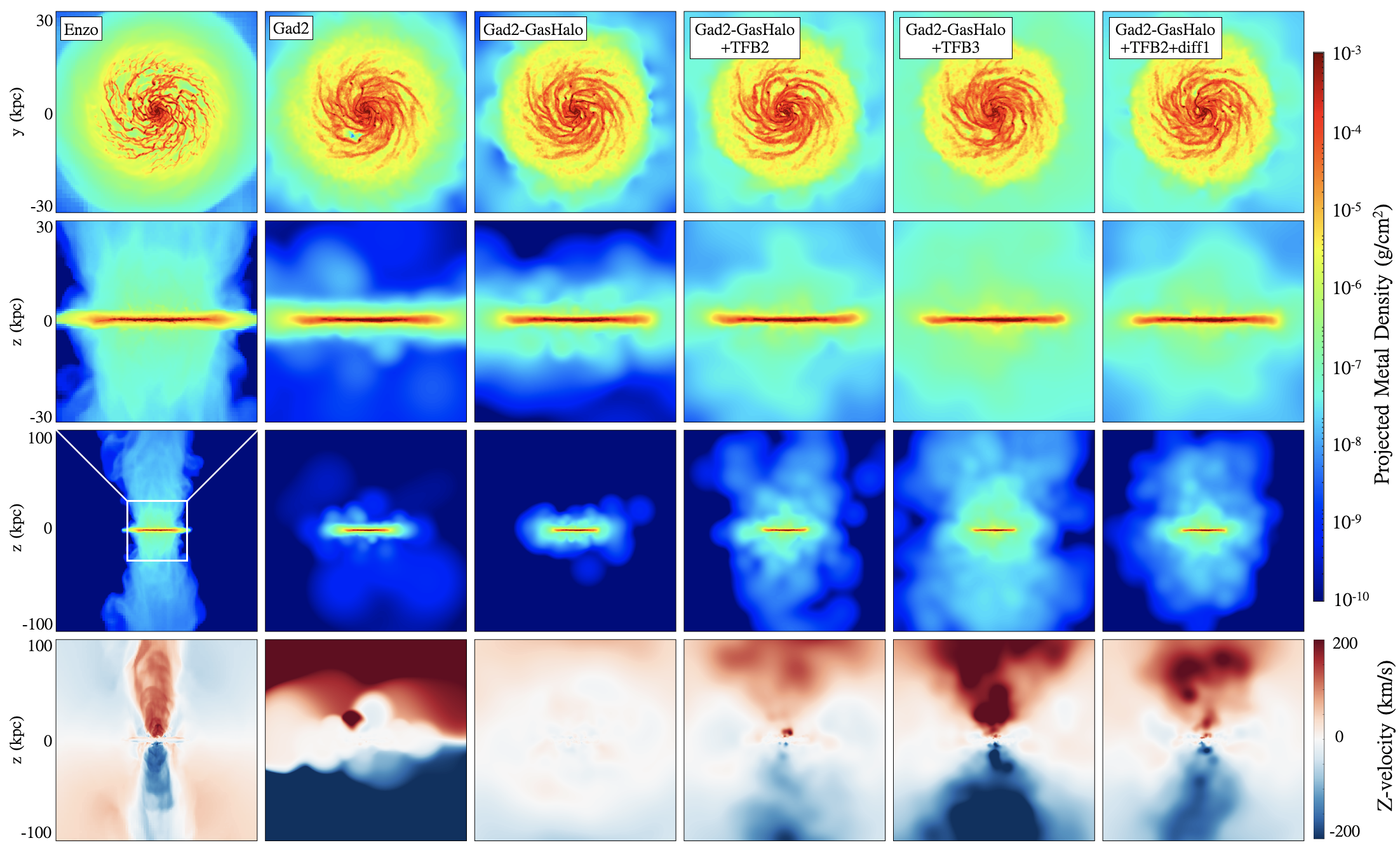Shin, E. -J., Kim, J. -H., & Oh, B. K.
We investigated the dependence of the galactic metal distribution on the numerical schemes and quantify the differences in the metal mixing among modern galaxy simulation codes (the mesh-based code Enzo and the particle-based codes Gadget-2 and Gizmo-PSPH).
In particular, we examine different stellar feedback strengths and an explicit metal diffusion scheme in particle-based codes, as a way to alleviate the well-known discrepancy in metal transport between mesh-based and particle-based simulations.
We demonstrate that the previously reported discrepancy in metals between mesh-based and particle-based simulations can be mitigated with our proposed prescription, enabling these simulations to be reliably utilized in the study of metals in galactic halos and in the circumgalactic medium.
For details, see our paper .

500 Myr snapshots of our isolated disk simulations using different ICs, stellar feedback, and diffusion schemes.
Face-on (1st row), edge-on (2nd row) and wider edge-on (3rd row) projections of metal density, and density-weighted edge-on projection of the vertical velocity (4th row). Click to see the high-resolution image.
[Movie]

Enclosed metal mass profiles as functions of the vertical height from the disk plane for different simulation setups at 500 Myr (left panel) and the time evolution of total metal mass in the halo (right panel).
Click to see the high-resolution image.
[Movie]

Two-dimensional probability distribution functions (PDFs) of metal mass on the density-temperature plane, for different simulation setups at 500 Myr.
The metal mass distribution in the PDF, especially in the halo, heavily depends on the thermal stellar feedback energy as well.
Click to see the high-resolution image.

The metallicity distribution functions (MDFs) for the disk gas (left panel) and the halo gas (right panel), in different simulation setups at 500 Myr.
Only with a sufficiently high metal diffusion coefficient Cd (> 0.02, i.e., Gad2-(GasHalo+TFB2)+diff1/+diff3 runs) can the particle-based simulations fill the domain of low-metallicity gas between Z=0 and Zdisk=0.02041.
Click to see the high-resolution image.

Projected volume of metal-poor gas (Z< 10-3) from the disk's edge-on angle at 100, 300 and 500 Myr.
We perform the projection in the cylindrical volume of 30 kpc in radius and 200 kpc in height, centered on the galactic disk in the z=0 plane.
By comparing the two particle-based simulations with and without the metal diffusion scheme, Gad2-GasHalo+TFB2 (left panel) and Gad2-GasHalo+TFB2+diff1 (middle panel), one can see that the scheme helps to enrich the halo with metals more effectively.
Click to see the high-resolution image.
[Movie]




